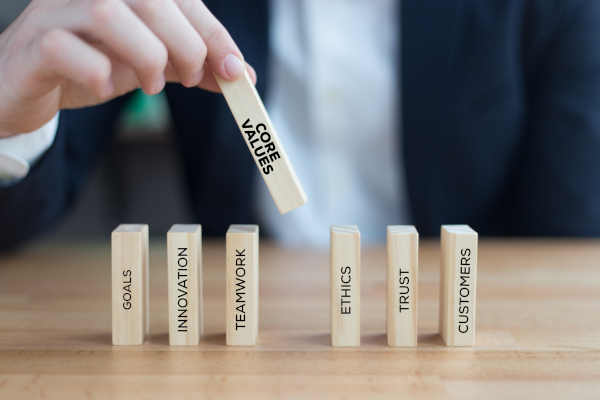Editor’s note: Procurement Pulse is a monthly look at a topic or trend that is impacting the procurement function at organizations of all sizes. If you are interested in future topics, you can see a full list of upcoming features on our Editorial Calendar.
Government and consumer pressures are creating new urgency around supply chain transparency, especially as it relates to ethical sourcing practices. Procurement professionals are feeling these pressures on a daily basis.
“Being transparent about your supply chain may seem scary, but being called out for not doing so should scare you more,” says Anouschka Jansen, the director for sustainability solutions at QIMA.

QIMA, which provides quality audits, notes that supply chain transparency “requires companies to know what is happening upstream in the supply chain and to disclose this information to relevant stakeholders.”
In Canada, a new supply chain law took effect on Jan. 1. The “Fighting Against Forced Labour and Child Labour in Supply Chains Act” is one of several new global laws aimed at promoting a more ethical and sustainable global supply chain. The law applies to both domestic and international businesses that meet at least two of three thresholds: CAD $40 million in gross worldwide revenues, $20 million in assets, or an average of 250 employees or more.
“This law is particularly important as it has an impact on the global scale, including nationally and in North America opposed to only third-world countries,” said Rejean (Reggie) Provost, enterprise account executive, team lead ESG Strategy at TradeBeyond. “It is as broad as any law can be to the point that it may cause a challenge to the government and agencies to enforce and to manage.”
According to QIMA, initial transparency efforts centered on supplier consolidation, cost and quality control. Then, non-government organizations (NGOs) started asking where products were being produced, and how.
“Since the rise of social media, consumers are demanding to know under what social and environmental conditions the products they were buying were made,” QIMA notes. There are dozens of global regulations that impact ethical sourcing processes.
“The legislative pressure is relentless. You snooze, you lose,” says Jansen.
Building an ethical supply chain encompasses navigating all aspects of procurement: due diligence, reporting, traceability, import bans and taxes.
“Procurement is the first step in building a responsible and resilient supply chain. Procurement teams begin the sourcing process by evaluating potential goods and materials suppliers that would make up the products made and distributed in the supply chain,” explains Etosha Thurman, chief marketing & solutions officer for SAP Intelligent Spend and Business Network. “In the evaluation, they take into consideration the environmental, societal, and economic impact of sourcing the materials. For example, potential risks with energy efficiency, water and land usage, and hazardous materials.
QIMA says companies need to define what legislation applies to them, what stakeholders are asking for, what clients need, and what they don’t know about their supply chain organization. From there, they can start to develop a path forward.
“Ethical supply chains cannot be achieved without sincere engagement with your suppliers,” says Jansen.
That process, QIMA says, can be accomplished through several steps that include internal alignment on departments, processes and procedures. It also includes studying your own networks to assess what you do and don’t know and where the risks lie, and doing the same with suppliers beyond your tier 1s. This includes monitoring risk for these suppliers and follow up as needed.
QIMA goes on to suggest a company trace a purchase order through the supply chain. It also suggests that any transparency program be “worker centric” and offers ways for employees to share complaints and concerns.
And finally, companies should share their transparency with clients and other stakeholders, as well as legal compliance departments.
“Building an ethical supply chain isn’t a sprint, it’s a marathon of continuous commitment and perseverance,” concludes Jansen.
SC
MR


Latest Supply Chain News
- Three frameworks for creative problem-solving in supply chain
- Mitigating geopolitical uncertainty: 4 essential tactics for industrial CSCOs
- Supply chain strategy for medical devices: A Q&A with industry expert Sanjay Gupta
- Inventory Management and the Supply Chain: Outlook 2025
- How technological innovation is paving the way for a carbon-free future in logistics and supply chains
- More News
Latest Podcast

 Explore
Explore
Topics
Procurement & Sourcing News
- Three frameworks for creative problem-solving in supply chain
- Mitigating geopolitical uncertainty: 4 essential tactics for industrial CSCOs
- Supply chain strategy for medical devices: A Q&A with industry expert Sanjay Gupta
- Inventory Management and the Supply Chain: Outlook 2025
- How technological innovation is paving the way for a carbon-free future in logistics and supply chains
- Parcel shipping spend: The untamed holdout in today’s supply chains
- More Procurement & Sourcing
Latest Procurement & Sourcing Resources

Subscribe

Supply Chain Management Review delivers the best industry content.

Editors’ Picks




